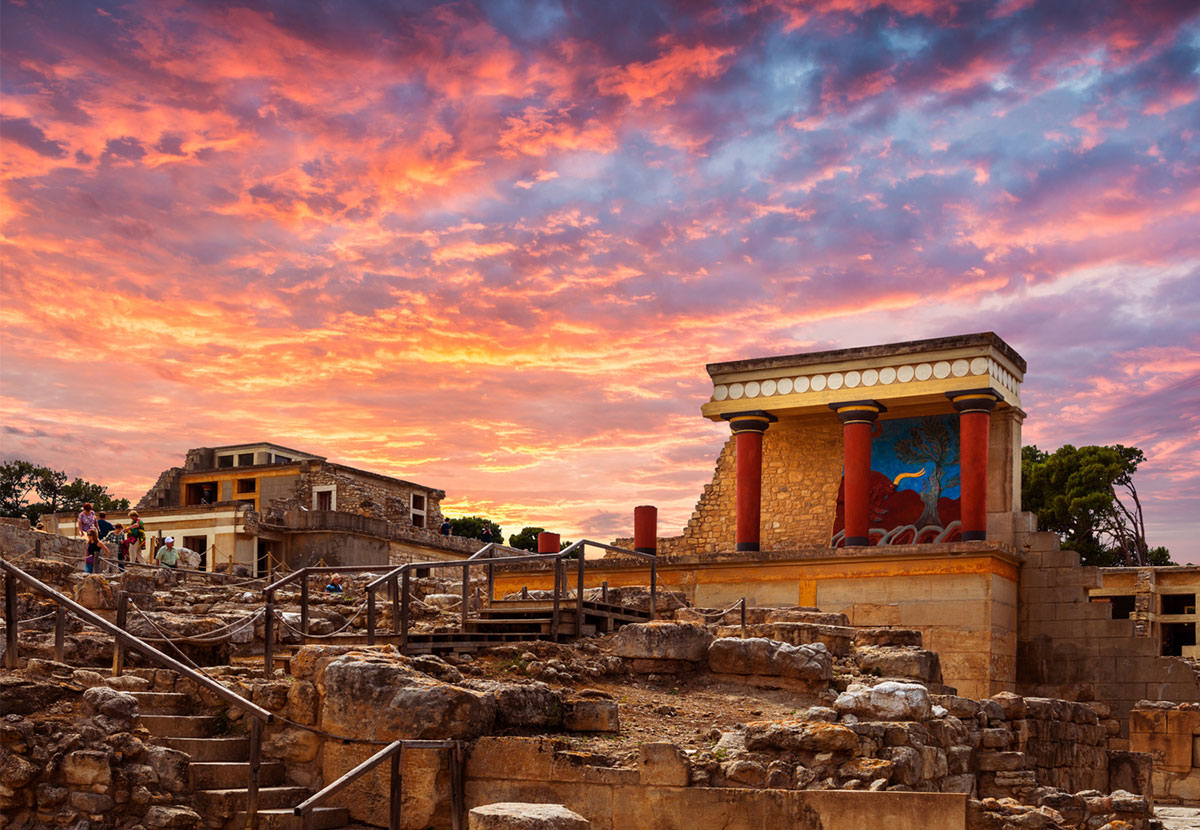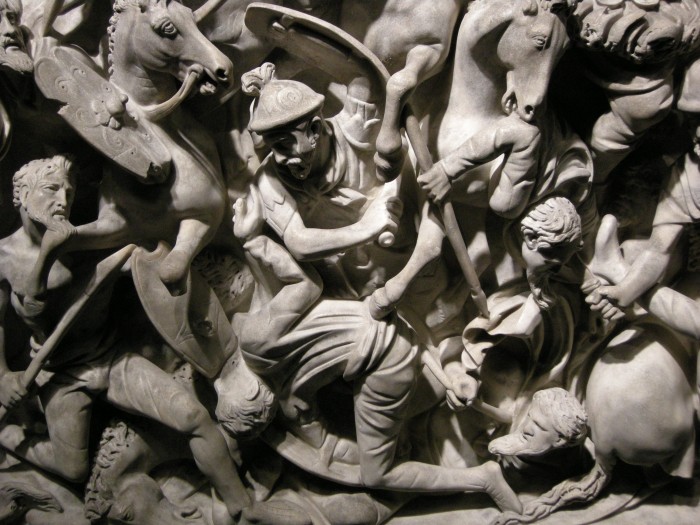
Top 10 Ancient Temples Around the World
A temple, from the Latin templum, is a structure dedicated to religious or spiritual activities; meditation, prayer, worship, sacrifice etc. The remains of the ancient temples are rings that link humanity to its roots. They are books; some are open which gives us glimpses of our ancestors’ religious and spiritual life, and some are closed. And thanks to the man’s awaking to the extreme significance of history, and the continuously archaeological work, today we are aware of our past and ancestors, and therefore ourselves and present, more than ever. Nevertheless, apparently we are still at the beginning of a long path. There are discoveries that raise questions more than the answers they give, such as Gobekli Tepe which question our mainstream knowledge of the history of mankind civilization and religion. A tour through ancient temples is a rich experience full of history, mystery, myths of gods and goddesses . So, we present you this virtual tour among the ruins of the past in different spots of the wide world. And trying to avoid boredom and redundancy, we stayed away from the renowned gems that almost everyone knows about as the Karnak and Parthenon, focusing on the more unusual ones.
10 vittala temple [Karnataka, India]
The Vittala, also known as Shri Vijaya Vitthala and noted for its musical pillars that have always astonished the passers, is a 15th century temple in India, the huge magnet to the lovers of the rich theologies and mysterious beliefs of the east; Hampi, an ancient village in the south Indian state of Karnatake, is where the temple exactly located as the largest of all the monuments in the village. Vitthala is the name of an incarnation of Lord Vishnu; Lord Vitthala whom the temple is dedicated to. Vishnu is a principal deity in Hinduism. Along with Brahma – the creator of the universe as well as the beings, and Shiva – the destroyer and transformer, Vishnu forms a Hindu trinity. In Vaishnavism, Vishnu is the supreme being who takes various avatars each time the world is threatened by evil forces. A legend tells that it was built as a habitation for Lord Vishnu in his Vitthala form, but the Lord had found the temple too grand for his use and returned to live in his own humble home.
The renowned Vittala temple was constructed under King Devaraya II (1422 – 1446 A.D.) who was an able administrator, warrior and a man of letters of the Vijayanagara Empire. Then it was expanded in the first half of the 16th century. It was built in the Dravidian style which consists primarily of pyramid shaped towers and are constructed of sandstones, soapstone or granite. The temple complex is a quite wide area surrounded by high compound walls and three towering gateways; it comprises many halls, shrines, and pavilions. One of the major attractions of the Vitthala is the marvelous pillars that emit music. Located in the Ranga Mantapa, meaning the large hall, the 56 pillars are also known as Saregama pillars; different musical notes are emanated when they tapped gently. There are a set of main pillars designed as musical instruments; they support the ceiling of the Ranga Mantapa, and each is surrounded by 7 minor pillars. The emission of music from the stones has remained a fascinating mystery, despite the attempt of the British, during their rule of India, to unravel it by cutting two of the pillars to find out if there is something inside them that causes the music; well, they found nothing.
9 The Temple of Inscriptions [Palenque, Mexico]
The Temple of Inscriptions ranks as one of the most renowned monuments and largest stepped pyramid structure of the Maya world. The Mayans or Mesoamerican Indians constructed one of the greatest civilizations of the Western Hemisphere; of course, that was before the Spanish conquest of Mexico and Central America. The temple is located in Palenque, ruined ancient Mayan city of the Late Classic Period (600 – 900 A.D.) hidden deep in the jungles of Mexico, and today is known as Chiapas state. The temple sits atop a pyramid of eight steps and comprises two passageways divided by a series of pillars, and covered by a vaulted roof. The whole structure was covered by a thick layer of stucco and as was common for Maya architecture style, it was painted red.
As the name indicates, the temple is noted for its hieroglyphic inscriptions. Consisted of 617 glyphs, they constitute the second longest known Maya inscriptions so far. The three tablets on the temple’s inner walls tell that the events that happened in the past will be repeated on the same calendar date. Another important part of the temple is the crypt discovered in 1952 cut deep inside the pyramid under the temple; it is believed to be the tomb of one of the most Maya leaders of Palenque; Pakal who ruled for almost 70 years in the 7th century.
8 The Temple of Ba’al [Homs, Syria]
The description of the temple as a hybrid architecture introduces it well, for it reflected the overlap between the Graeco-Roman architecture and the near eastern elements, as well as the inter-mixed cultures in the ancient Mediterranean. We cannot actually visit it anymore as it was destroyed by ISIS in August 2015, but it will remain in the memory of the mankind civilization and we can still have our virtual tour through it. However the temple was initially constructed in 32 A.D., it was gradually completed during the first and second centuries. It was dedicated to the Semitic god Bal or Baal along with Aglibol – the moon god, and Yarhibol – the sun god. The Canaanites were the main cult of Baal; he was praised as the universal god of fertility and was called the Lord of Rain and Dew, the indispensable two forms of moisture for fertile soil in Canaan. Palmyra, where the temple was located, is the name the Romans gave the city when incorporated it as a province of them. However, it was originally known as Tadmur and it has inhabited by people since the early second millennium B.C.
The temple’s ground plan is derived from the eastern architecture, including independent shrines for the deities, while the architectural elements of the temple’s elevation reflect the Greco-Roman style, which was seen in the architecture elements that adorned the frieze course and roofline as well as the employment of the Corinthian order.
7 The Erechtheum [Athens, Greek]
The Erechtheion or Erechtheum, located on the north side of the Acropolis of Athens, is an ancient Greek temple dedicated to Athena – the goddess of wisdom and war – and was built between 421 and 406 B.C. in the golden age of Athens. It housed the ancient wooden cult statue of the goddess. Erechtheum is derived from the name of the Mythical Athenian king and demi-god Erechtheus who was mentioned in Homer’s Iliad as a great ruler of Athens during the Archaic Period. Among the impressive features of the temple are the prominent position above the city and the porch of six caryatids; The main structure of the Erechtheum consists of four compartments; the most eastern and largest one contained the olivewood statue of Athena. Besides her, the temple was also a shrine for other Greek gods and demi-gods such as Poseidon, Hephaestus, and Erechtheus.
6 Temple of Seti I [Luxor, Egypt]
After the restoration work, the temple of Seti I has become one of the most completed temples with impressive decoration in Egypt. The temple was initially constructed by the New Kingdom king, Seti I (1294 – 1279) and completed by his son and successor Ramses II. Sadly, its large pylon, in the middle of which was the entrance, is no longer exist. Then there are two courtyards where Ramses II is depicted killing the Asiatics and worshipping Osiris. Beyond is the first hypostyle hall, completed by Ramses too. The second hypostyle was the last part that has been decorated by Seti; the reliefs that were accomplished under Seti I, weather in this temple or the rest of his monuments, are of the highest quality. At the rear of the second hypostyle hall are sanctuaries for each of the seven gods the temple is dedicated to; Horus, his mother Isis, her husband Osiris, Amun-Re, Egypt’s state God during the New Kingdom, Re Horakhty, an image of the sun god Re, Ptah, the great god of Memphis, and a sanctuary for Seti himself.
5 Temple of Amada [Nubia, Egypt]
Amada temple is the oldest Egyptian temple in Nubia at the south of Egypt. Located at 115 KM to the south of Aswan, it dates back to the 15th century B.C. Despite the humble exterior of the temple, the interior walls are decorated with some of the most finely cut reliefs with vibrant colors. Plus, the temple is surrounded by serene desert vistas. The original building plan for the structure comprised a pylon which no longer exists, forecourt and a portico which led to a sanctuary. The temple was built under the king Thutmosis III, and Amenhotep II, his son and successor; some changes were added by Thutmosis IV who placed a roof over the forecourt and transformed it into a pillared hypostyle. The temple was dedicated to Amun-Re, king of gods at that time, and Re-Horakhty. Amada temple also has two inscriptions recorded military victories over Syria and Libya. In ancient Egyptian mythology, enemies and rebellions were representations of chaos against the order which was represented by Egypt and its king. In 1964, the temple was moved 2.5 KM from its original site to protect it from the rising waters of Lake Nasser that resulted from the construction of the Aswan High Dam.
4 Palace of Knossos [Crete, Greek]
The ancient Knossos, located on the island of Crete, is considered Europe’s oldest city, or as Will Durant puts it “the first link in the European chain”. The palace of Knossos was a monumental center, administrative as well as religious, in the period from the 19th to 16th centuries B.C. Nevertheless, the site of Knossos has borne a quite long history of human habitation since 7000 B.C. when the first Neolithic settlement was founded. The Minoan civilization, an Aegean Bronze Age civilization, settled on the island of Crete and other Aegean islands since about 2600 B.C.
The palace was destroyed and rebuilt after an earthquake; it occupied about 20,000 square meters. The ruins existed today are from the second palace. The architectural and artistic remains reflect the prosperity and abundance the Minoans were enjoying; the wall frescoes on the walls demonstrate skillful accuracy. Now here we come to one of my favorite parts; the myths that shroud ancient places; the Greek mythology tells that the palace was designed by Daedalus, the famed architect. The design was quite complicated that no one placed in it could ever find the way out. In order to maintain the secrecy of the palace plan, King Minos kept Daedalus prisoner, but he forgot that his architect was an innovator; he built two pairs of wings for him and his son, Ikaros, but while they are flying off the island, Ikaros dropped-out his father’s warning not to fly too close to the sun so that the wax that held the wings together would not melt; Ikaros flew higher and higher until he finally fell into the Aegean sea.
3 Ziggurat of Ur [Tell el-Muqayyar, Iraq]
The Ziggurat of Ur is one of the largest and well-preserved ziggurats of Mesopotamia, the historical region situated within the Tigris and Euphrates rivers; Mesopotamia is a Greek word meaning “between rivers”. Probably you are thinking that if we are going to say what a ziggurat is, better be now. Well, the ziggurats are stepped towers over which temples were constructed. By 2000 B.C., Sumerian cities were noted for its mud-brick ziggurats. It is unknown for certain the reason why they were built, but as the ancient Egypt pyramid, the ziggurat of the ancient Near East has four sides and raises up towards the realm of gods. The Ziggurat of Ur is a rectangular structure with three levels and three massive staircases end up at a gate at the first terrace level; the ziggurat is originally between 70 and 100 feet high. The Ziggurat and the temple atop date back to about 2100 B.C., and was constructed for Nanna, the moon god and divine patron in Ur by far. He was called “lord of wisdom” and during the period when Ur reigned supreme over the Euphrates valley, he took the epithets of “father of the gods” and “chief of the gods”.
2 Ħal-Saflieni Hypogeum [Valletta, Malta]
Here we come to a unique structure that takes us back to a faraway past. Hypogeum literally means ‘underground’ in Greek. The Ħal-Saflieni Hypogeum, which earliest remains go back to 4000 B.C, is an underground structure which is thought to have been a sanctuary and necropolis; it dates to the Saflieni phase and was discovered accidentally in 1902. The complex is considered one of the best-preserved examples of the Maltese temples’ architectural style, as some of the chambers, cut in the limestone, have similar architecture to the above ground megalithic temples. The Hypogeum consists of three superimposed levels; the uppermost of them, the earliest, comprises a large hollow with burial chambers on its sides; a doorway leads to the middle level which exhibits some of the best features of the Hypogeum as the sophisticated red ochre paintings which are the oldest and only known prehistoric paintings on the Malta; then there is the Lower Level which can be reached by seven steps.
Among the broad range of objects that were found, were curved figures for humans and animals that range in style from abstract to realistic; their major theme is thought to be the veneration of the dead and the spiritual transformation; among the most notable ones of them is the Sleeping Lady, a clay figure thought to represent a mother goddess. In 1980, the Hypogeum was designated as a UNESCO World Heritage Site. To protect the magnificent site, an environmental control system that keeps temperature and humidity at required levels was added since 2000. The Hypogeum is accessible to the general public for 8 hours a day and only 10 visitors an hour are allowed in.
1 Gobekli Tepe Temple [Turkey]
It can also be called “the world’s oldest temple”. Gobekli Tepe dates back to circa 10,000 B.C. which changes all that we know about the history of mankind civilization on this planet. The prehistoric site is located about 15 km away from the city of Sanliurfa. The religious complex comprises a series of circular and oval-shaped structures atop a hill. Furthermore, the excavations and geomagnetic results showed the existence of at least 20 installations, which archaeologically can be called a temple. The principle pattern of the unearthed installations consists of two monumental T-shaped pillars in the center of each installation surrounded by enclosures and walls. The height of these mystical, T-shaped configurations ranges from three to six meters and there are carvings of human extremities, animals and abstract symbols depicted on them. Here’s a piece of information that left the scholars, archaeologists, and everyone knows about it scratching their heads; the pillars’ weight varies between 40 to 60 tons; how did they erect them? 12,000 years ago even simple hand tools were hard to come by; no farming or society; only roaming hunter-gatherers, according to the history of human civilization.
Now I would like to end this tour among these remains of the past from different lands, which form one planet, with these stellar words of Suzy Kassem, a writer, poet, and philosopher.
One God, many faces.
One family, many races.
One truth, many paths.
One heart, many complexions.
One light, Many reflections.
One world, many imperfections.
ONE
WE are all one,
But many


















































